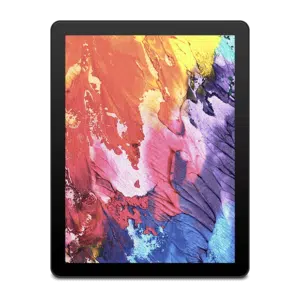Comparing Electronic Paper Displays with OLED and LED
Comparing Electronic Paper Displays with OLED and LED
Blog Article
Comparing Electronic Paper Displays with OLED and LED
Display technology is becoming an integral element of our day-to-day lives, appearing in everything from smartphones and e-readers to large-scale advertising panels. Among the varied selection of large E ink display, OLED (Organic Light-Emitting Diodes), and LED (Light-Emitting Diodes) have emerged as some of the very commonly discussed options. While each type serves a unique distinctive purpose, their differences in functions, efficiency, and use cases make sure they are suited to particular applications. Let's have a closer consider the critical traits of these display technologies.
Electronic Paper displays (ePaper)
Electronic Paper displays, also referred to as ePaper or Electronic Ink displays, are created to copy the appearance and readability of traditional Ink on paper. This engineering employs tiny microcapsules comprising charged dark and bright contaminants stopped in a definite fluid. When a power subject is used, the particles go on to each side of the supplement, creating an obvious image. The image stays static till still another electric area is applied, rendering it suitable for showing text-based content such as for instance publications, newspapers, and e-readers.

Among the principal benefits of ePaper displays is their low power consumption. Unlike old-fashioned LCD
Knowledge Electronic Paper displays
A digital Paper display (ePaper) mimics the appearance of Ink on paper. Unlike old-fashioned monitors, ePaper depends on their ability to reveal normal light rather than emitting its own. This technology not only diminishes vision stress but in addition gives unmatched readability in sunshine, which makes it suitable for e-readers and digital signage solutions.
One standout function of ePaper displays is their extremely minimal power consumption. Since they simply use energy when adjusting material, ePaper screens are highly successful and suitable for battery-powered devices. But, their refresh prices are slower in comparison to OLED and LED displays, decreasing their applicability to fixed or minimally dynamic content.
OLED displays
OLED displays are known for their gorgeous aesthetic quality, offering lively colors, strong blacks, and exemplary contrast. Each pixel in an OLED display emits a unique light, reducing the requirement for a backlight. That not merely permits thinner, more light patterns but in addition effects in better power performance in comparison to LED in certain scenarios.
One crucial benefit of OLED displays is their flexibility. They could be manufactured in bent or collapsible patterns, creating them popular in cutting-edge smartphones and wearable devices. Nevertheless, OLED screens have issues, such as for instance susceptibility to burn-in and smaller lifespans in comparison to different technologies.
LED displays
LED displays, the most common of the three, rely on a backlit process to gentle their pixels. Whilst not as visually striking as OLED 13.3" epaper display, LEDs are extremely sturdy, long-lasting, and cost-effective. These features cause them to become suited to a broader array of applications, including TVs, computer displays, and outdoor advertising.
LED displays typically accomplish properly with regards to brightness, making them the ideal choice for conditions with large normal light. But, they flunk in achieving exactly the same serious contrast and color precision as OLED technology.

Final Comparison
When choosing between ePaper, OLED, and LED displays, the option depends largely on the intended purpose. For static material like studying or signage, ePaper excels having its reduced energy application and large presence in organic light. OLED shines in purposes wherever vibrant colors and mobility are paramount. Meanwhile, LED remains a dependable and cost-efficient answer for many different general-purpose needs.
Each display technology delivers something special to the desk, ensuring that there's a great option for every situation. Knowledge these differences might help people and businesses produce informed choices that match their unique display requirements. Report this page